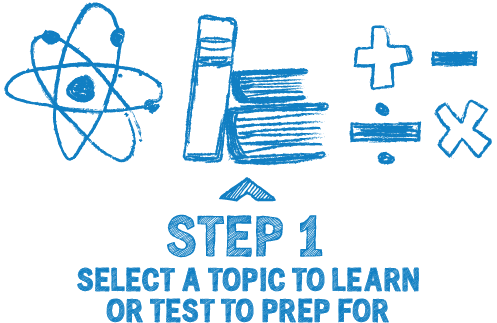What are Mixtures?
Grade 6 Science Worksheets
A mixture is a combination of two or more substances that are not chemically combined. Unlike compounds, mixtures do not have a fixed composition, and the properties of a mixture can vary depending on the proportion of its components.
Table of Contents:
- What are Mixtures?
- Properties of Mixtures
- How Are Mixtures Formed?
- Types of Mixtures
- Difference Between Elements, Compounds, & Mixtures
- FAQs
Mixtures - Grade 6 Science Worksheet PDF
This is a free printable / downloadable PDF worksheet with practice problems and answers. You can also work on it online.
|
|
Untimed |
|
Sign up with your email ID to access this free worksheet.
"We really love eTutorWorld!"
"We really love etutorworld!. Anand S and Pooja are excellent math teachers and are quick to respond with requests to tutor on any math topic!" - Kieran Y (via TrustSpot.io)
"My daughter gets distracted easily"
"My daughter gets distracted very easily and Ms. Medini and other teachers were patient with her and redirected her back to the courses.
With the help of Etutorworld, my daughter has been now selected in the Gifted and Talented Program for the school district"
- Nivea Sharma (via TrustSpot.io)
What are Mixtures?
A mixture is a combination of two or more substances that are not chemically combined. Unlike compounds, mixtures do not have a fixed composition, and the properties of a mixture can vary depending on the proportion of its components.
Mixtures can be homogeneous or heterogeneous. A homogeneous mixture has a uniform composition and properties throughout, such as a solution of salt in water. A heterogeneous mixture, on the other hand, has an uneven composition and properties throughout, such as a mixture of oil and water.
Mixtures can be separated into their individual components using physical methods, such as filtration, distillation, chromatography, and evaporation.
Examples of mixtures include air, which is a mixture of gasses such as nitrogen, oxygen, and carbon dioxide, and soil, which is a mixture of minerals, organic matter, and water.
Many foods and beverages are also mixtures, such as trail mix, which contains nuts, dried fruit, and chocolate chips, and fruit juice, which contains water, sugar, and various fruit extracts.
Properties of Mixtures
1. Variable Composition: The composition of a mixture can vary, and the properties of a mixture depend on the proportion of its components.
2. Physical Properties: The physical properties of a mixture, such as color, texture, and density,
3. No Chemical Reaction: The components of a mixture are not chemically combined, so they retain their individual chemical properties.
4. Separable: Mixtures can be separated into their individual components using physical methods, such as filtration, distillation, and chromatography.
How Are Mixtures Formed?
Mixtures are formed by physically combining two or more substances. The substances can be in different physical states, such as solids, liquids, or gases. Mixing can occur by stirring, shaking, or simply combining the substances together.
Some common examples of how mixtures are formed include:
- Mixing salt and water to make a saltwater solution.
- Mixing sugar and water to make a sugar solution.
- Mixing sand and water to make a suspension.
- Mixing oil and vinegar to make a salad dressing.
- Mixing different colors of paint to make a new color.
In general, mixtures are formed when substances are combined in such a way that they do not react chemically with one another.
The resulting mixture can have different properties than its individual components, and these properties can be modified by changing the proportion of the components in the mixture.
“There have been times when we booked them last minute, but the teachers have been extremely well-prepared and the help desk at etutorworld is very prompt.
Our kid is doing much better with a higher score.”
6th Grade Tutoring
eTutorWorld offers Personalized Online Tutoring for Math, Science, English, and Standardised Tests.
Our Tutoring Packs start at just under $22.49 per hour, and come with a moneyback guarantee.
Schedule a FREE Trial Session, and experience quality tutoring for yourself. (No credit card required.)
Types of Mixtures
Mixtures can be categorized into two types: homogeneous and heterogeneous.
- Homogeneous mixtures: In a homogeneous mixture, the composition and properties are uniform throughout the mixture. Solutions are a common example of homogeneous mixtures. Examples include salt water, sugar water, and air.
- Heterogeneous mixtures: In a heterogeneous mixture, the composition and properties vary throughout the mixture. Suspensions and colloids are examples of heterogeneous mixtures. Examples include sand and water, oil and water, and blood.
Difference Between Elements, Compounds, & Mixtures
Elements are pure substances that cannot be broken down into simpler substances by chemical means. They are made up of atoms of the same type. Examples include oxygen, gold, and carbon.
Compounds are pure substances made up of two or more different elements that are chemically combined in a fixed ratio. They can be broken down into their constituent elements by chemical means. Examples include water, carbon dioxide, and sodium chloride.
Mixtures are combinations of two or more substances that are not chemically combined. They do not have a fixed composition and can be separated by physical means. Examples include air, trail mix, and salad dressing.
In summary, the main differences between elements, compounds, and mixtures are the way they are composed, their properties, and the methods used to separate their components.
Elements are composed of only one type of atom, compounds are composed of two or more elements chemically bonded together, and mixtures are composed of two or more substances that are not chemically bonded together.
Do You Stack Up Against the Best?
If you have 30 minutes, try our free diagnostics test and assess your skills.
Mixtures FAQS
What is a mixture?
A mixture is a combination of two or more substances that are not chemically combined. They do not have a fixed composition and can be separated by physical means.
What is the difference between a homogeneous and a heterogeneous mixture?
In a homogeneous mixture, the composition and properties are uniform throughout the mixture, while in a heterogeneous mixture, the composition and properties vary throughout the mixture.
What are the three states of matter?
The three states of matter are solid, liquid, and gas. Solids have a fixed shape and volume, liquids have a fixed volume but take the shape of their container, and gasses have no fixed shape or volume.
What is a molecule?
A molecule is a group of two or more atoms held together by chemical bonds. Molecules can be made up of atoms of the same element (e.g., O2) or different elements (e.g., H2O).
What is a compound?
A compound is a pure substance made up of two or more different elements that are chemically combined in a fixed ratio. Compounds can be broken down into their constituent elements by chemical means.

Kathleen Currence is one of the founders of eTutorWorld. Previously a middle school principal in Kansas City School District, she has an MA in Education from the University of Dayton, Ohio. She is a prolific writer, and likes to explain Science topics in student-friendly language. LinkedIn Profile
Affordable Tutoring Now Starts at Just $22.49
eTutorWorld offers affordable one-on-one live tutoring over the web for Grades K-12. We are also a leading provider of Test Prep help for Standardized Tests (SCAT, CogAT, MAP, SSAT, SAT, ACT, ISEE, and AP).
What makes eTutorWorld stand apart are: flexibility in lesson scheduling, quality of hand-picked tutors, assignment of tutors based on academic counseling and diagnostic tests of each student, and our 100% money-back guarantee.
Whether you have never tried personalized online tutoring before or are looking for better tutors and flexibility at an affordable price point, schedule a FREE TRIAL Session with us today.
*There is no purchase obligation or credit card requirement
Grade 6 Science Worksheets
- Inquiry process
- Nature of Science
- Scientific Inquiry
- Inquiry, Analysis and Problem Solving
- Ethical Practices
- Science and Society
- Biotic and Abiotic Factors
- Impact of Organisms
- Adaptation
- Spheres of Earth
- Natural Resources
- Environmental Issues
- Conservation of Earth
- Understanding Technology
- Abilities To Do Technological Design
- Structure of Earth
- Solar System
- Rocks and Fossils
- Earth Systems
- Plate Tectonics
- Evolution
- Magnetic Field of Earth
- Geologic Time
- Materials and Processes That Shape a Planet
- Astronomy
- Ecology
- Energy
- Kinetic and Potential Energy
- Energy Transfer
- Matter and its Structure
- States of Matter
- Physical and Chemical Changes
- Force and Motion
- Electricity and Magnetism
- Wave Interactions
- Sound
- Light
- Introduction to Life Science
- The Origin & History of Life On Earth
- Plant and Animal Cells
- Parts of a Cell
- The Cell Cycle
- How Living Organisms Get Energy
- Classification of Organisms
- How Plants Grow & Reproduce
- The Human Respiratory System
- The Human Cardiovascular System
- The Human Digestive System
- The Human Endocrine Systems
- The Human Nervous System
- The Human Muscular System
- The Human Skeletal System
IN THE NEWS

Our mission is to provide high quality online tutoring services, using state of the art Internet technology, to school students worldwide.
Online test prep and practice
SCAT
SSAT
ISEE
PSAT
SAT
ACT
AP Exam
Science Tutoring
Physics Tutoring
Chemistry Tutoring
Biology Tutoring
Math Tutoring
Pre-Algebra Tutoring
Algebra Tutoring
Pre Calculus Tutoring
Calculus Tutoring
Geometry Tutoring
Trigonometry Tutoring
Statistics Tutoring
Quick links
Free Worksheets
Fact sheet
Sales Partner Opportunities
Parents
Passive Fundraising
Virtual Fundraising
Our Expert Tutors
Safe and Secure Tutoring
Interactive Online Tutoring
After School Tutoring
Elementary School Tutoring
Middle School Tutoring
High School Tutoring
Home Work Help
Math Tutors New York City
Press
©2022 eTutorWorld Terms of use Privacy Policy Site by Little Red Bird
©2022 eTutorWorld
Terms of use
Privacy Policy
Site by Little Red Bird












